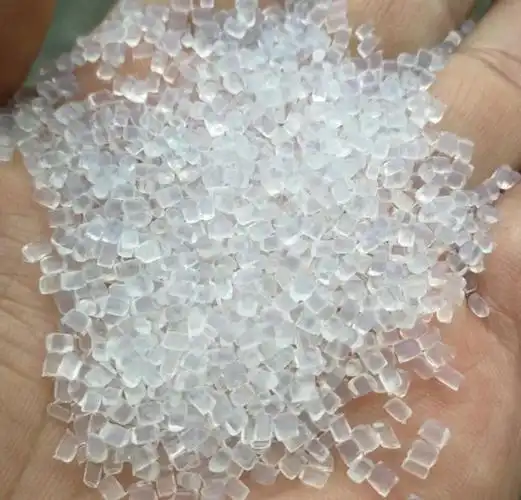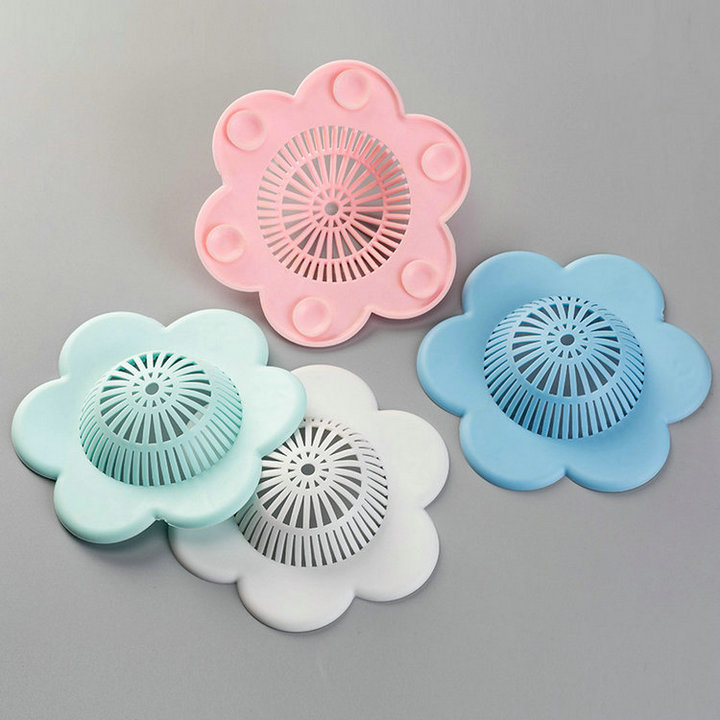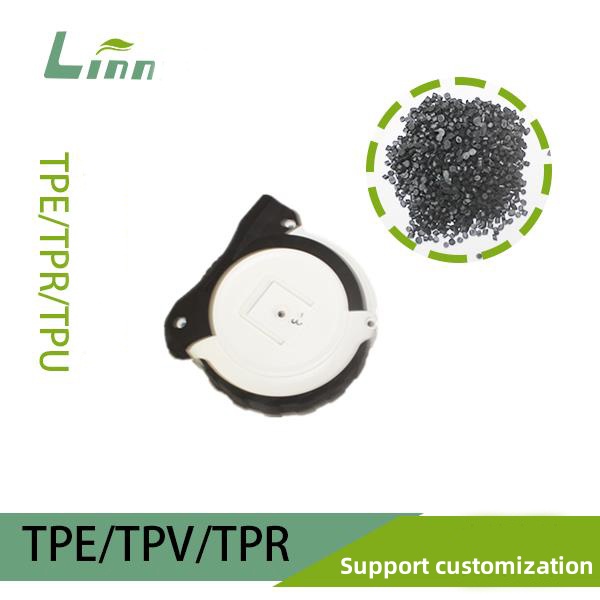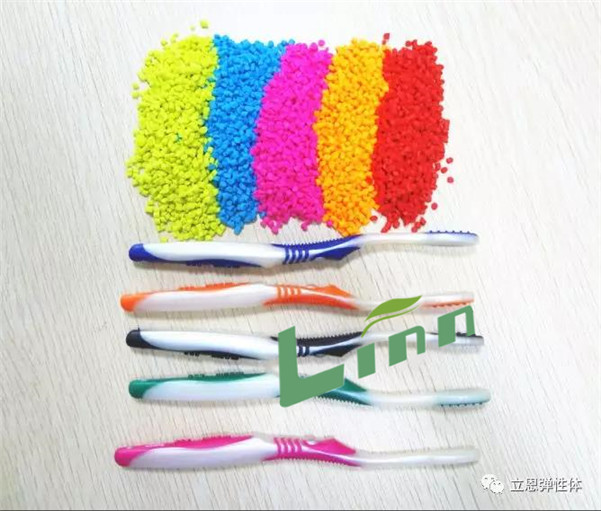In the dynamic world of plastic injection molding, TPE (Thermoplastic Elastomer) soft rubber stands out for its unique combination of elasticity and processability. However, like any material, it comes with its own set of challenges. One issue that frequently perplexes molders is the peeling of TPE soft rubber injection-molded products. This phenomenon not only mars the aesthetic appeal of the final product but can also compromise its structural integrity and functionality.

As someone who has spent years immersed in the intricacies of TPE injection molding, I’ve encountered this problem on numerous occasions and have developed a deep understanding of its underlying causes. In this article, I’ll share my insights into why peeling occurs in TPE soft rubber injection-molded products and provide practical solutions to help you mitigate this issue.
Understanding TPE Soft Rubber and Its Behavior During Injection Molding
Before delving into the reasons for peeling, it’s essential to grasp the fundamental characteristics of TPE soft rubber and how it behaves during the injection molding process. TPE is a class of copolymers or a physical mix of polymers (usually a plastic and a rubber) that possess both thermoplastic and elastomeric properties. This means they can be melted and re-molded like thermoplastics while retaining the elasticity of rubbers.
During injection molding, TPE is heated to a molten state and then injected into a mold cavity under high pressure. The material fills the cavity, taking on its shape, and then cools and solidifies. However, the behavior of TPE during this process is influenced by several factors, including its molecular structure, viscosity, and thermal stability, which can contribute to peeling if not properly managed.
Common Causes of Peeling in TPE Soft Rubber Injection-Molded Products
Now, let’s explore the primary reasons why peeling might occur in TPE soft rubber injection-molded products:
1. Material Incompatibility and Contamination
One of the most common causes of peeling is the use of incompatible materials or contamination during the manufacturing process.
Incompatible Additives: TPE formulations often contain additives such as plasticizers, stabilizers, and fillers to enhance specific properties. However, if these additives are incompatible with the base TPE material or with each other, they can cause phase separation, leading to peeling at the surface or within the material.
Contamination: Contamination can occur at various stages of the manufacturing process, from raw material handling to mold cleaning. Foreign particles, such as dust, oils, or other plastics, can adhere to the mold surface or become embedded in the TPE material, causing delamination and peeling.
Table 1: Impact of Material Incompatibility and Contamination on Peeling
| Factor | Effect on Peeling | Recommended Solution |
|---|---|---|
| Incompatible Additives | Phase separation → Surface or internal peeling | Select additives that are compatible with the base TPE material and each other; conduct compatibility tests before production |
| Contamination | Foreign particles → Delamination → Peeling | Implement strict cleanliness protocols throughout the manufacturing process; regularly clean and inspect molds |
2. Improper Processing Conditions
The processing conditions used during injection molding play a crucial role in determining the quality of the final product. Improper settings can lead to a range of defects, including peeling.
Temperature Control: Incorrect mold or melt temperatures can cause the TPE material to degrade or not flow properly, leading to poor adhesion between layers and potential peeling. If the mold is too cold, the material may solidify too quickly, trapping air or causing incomplete filling. If the mold is too hot, the material may degrade, losing its elasticity and adhesion properties.
Injection Speed and Pressure: The injection speed and pressure must be carefully controlled to ensure proper filling of the mold cavity and adequate compaction of the material. If the injection speed is too high, it can cause turbulence and air entrapment, leading to peeling at the surface. If the injection pressure is too low, it may not be sufficient to compact the material properly, resulting in poor adhesion between layers.

Cooling Time: Inadequate cooling time can cause the material to deform or peel upon ejection from the mold. If the material is not fully solidified, it may not have the necessary strength to withstand the stresses of ejection, leading to surface damage and peeling.
Table 2: Impact of Improper Processing Conditions on Peeling
| Factor | Effect on Peeling | Recommended Solution |
|---|---|---|
| Temperature Control | Incorrect temperatures → Material degradation or poor flow → Poor adhesion → Peeling | Maintain optimal mold and melt temperatures based on material specifications; use temperature controllers to ensure consistency |
| Injection Speed and Pressure | Improper settings → Turbulence, air entrapment, or inadequate compaction → Peeling | Optimize injection speed and pressure based on part geometry and material properties; conduct trials to find the optimal settings |
| Cooling Time | Inadequate cooling → Deformation or peeling upon ejection | Ensure sufficient cooling time for the material to fully solidify; consider using cooling channels or fans to accelerate cooling if necessary |
3. Mold Design and Maintenance Issues
The design and maintenance of the mold can also contribute to peeling in TPE soft rubber injection-molded products.
Mold Surface Finish: A rough or damaged mold surface can cause the TPE material to adhere poorly, leading to peeling at the surface. Additionally, a poor surface finish can trap air or contaminants, further exacerbating the peeling problem.
Gate Design: The gate is the point where the molten material enters the mold cavity. If the gate is improperly designed or located, it can cause turbulence, shear heating, or degradation of the material, leading to poor adhesion and peeling.
Mold Wear: Over time, the mold can wear down due to repeated use, leading to changes in its dimensions and surface finish. This can affect how the material flows into the mold cavity and how well it adheres to the mold surface, potentially causing peeling.
Table 3: Impact of Mold Design and Maintenance Issues on Peeling
| Factor | Effect on Peeling | Recommended Solution |
|---|---|---|
| Mold Surface Finish | Rough or damaged surface → Poor adhesion → Peeling | Maintain a smooth and clean mold surface; use high-quality mold release agents; regularly inspect and polish the mold as needed |
| Gate Design | Improper design → Turbulence, shear heating, or degradation → Poor adhesion → Peeling | Optimize gate design based on part geometry and material properties; consider using a runner system to distribute material evenly |
| Mold Wear | Changes in dimensions or surface finish → Affect material flow and adhesion → Peeling | Implement a regular mold maintenance schedule; inspect the mold for wear and damage regularly; replace worn components promptly |
4. Material Degradation and Aging
TPE materials can degrade over time due to exposure to heat, light, oxygen, and other environmental factors. This degradation can lead to changes in the material’s properties, such as reduced elasticity and adhesion, which can contribute to peeling.

Thermal Degradation: Prolonged exposure to high temperatures during processing or storage can cause the TPE material to degrade, losing its elasticity and adhesion properties. This can lead to peeling at the surface or within the material.
UV Degradation: Exposure to ultraviolet (UV) light can cause the TPE material to break down, leading to discoloration, cracking, and peeling. This is particularly relevant for products that will be used outdoors or in environments with high levels of UV radiation.
Oxidative Degradation: Oxygen can react with the TPE material, causing it to oxidize and degrade over time. This can lead to changes in the material’s properties and potential peeling.
Table 4: Impact of Material Degradation and Aging on Peeling
| Factor | Effect on Peeling | Recommended Solution |
|---|---|---|
| Thermal Degradation | Prolonged exposure to high temperatures → Loss of elasticity and adhesion → Peeling | Store TPE materials in a cool, dry place away from direct sunlight; avoid overheating during processing; use antioxidants to slow down thermal degradation |
| UV Degradation | Exposure to UV light → Discoloration, cracking, and peeling | Use UV stabilizers in the TPE formulation; protect products from direct sunlight when possible; consider using a coating or finish to provide additional UV protection |
| Oxidative Degradation | Reaction with oxygen → Changes in material properties → Peeling | Use antioxidants in the TPE formulation to slow down oxidative degradation; store materials in airtight containers to minimize exposure to oxygen |
Practical Solutions to Prevent Peeling in TPE Soft Rubber Injection-Molded Products
Now that we’ve explored the common causes of peeling in TPE soft rubber injection-molded products, let’s discuss some practical solutions to help you prevent this issue:
1. Select High-Quality Materials and Additives
Choose TPE materials and additives that are of high quality and compatible with each other. Work with reputable suppliers who can provide detailed information about the material’s properties and compatibility with other additives. Conduct compatibility tests before production to ensure that the materials will perform as expected.
2. Optimize Processing Conditions
Fine-tune your processing conditions, including temperature, injection speed, pressure, and cooling time, to ensure optimal material flow and adhesion. Use process monitoring and control systems to maintain consistency and identify any deviations that may lead to peeling. Conduct trials and experiments to find the optimal settings for your specific part and material.
3. Design and Maintain Molds Properly
Invest in high-quality mold design and maintenance to ensure proper material flow and adhesion. Work with experienced mold designers who understand the behavior of TPE materials and can create molds that minimize turbulence and shear heating. Implement a regular mold maintenance schedule to inspect and repair any wear or damage promptly.

4. Protect Materials from Degradation
Store TPE materials in a cool, dry place away from direct sunlight and other sources of heat and light. Use antioxidants and UV stabilizers in the TPE formulation to slow down degradation and extend the material’s lifespan. Consider using protective coatings or finishes on the final product to provide additional protection against environmental factors.
5. Implement Quality Control Measures
Establish a robust quality control system to monitor the quality of your molded parts throughout the production process. Inspect each part for peeling and other defects, and take corrective action if necessary. Use statistical process control (SPC) techniques to identify trends and patterns in your production data and make data-driven decisions to improve quality.
Conclusion
Peeling in TPE soft rubber injection-molded products is a complex issue that can be caused by a variety of factors, including material incompatibility, improper processing conditions, mold design and maintenance issues, and material degradation. By understanding these causes and implementing practical solutions, such as selecting high-quality materials, optimizing processing conditions, designing and maintaining molds properly, protecting materials from degradation, and implementing quality control measures, you can produce high-quality TPE parts with minimal peeling defects.
As an industry veteran, I’ve seen firsthand the impact that peeling can have on production efficiency and product quality. By following the tips and solutions outlined in this article, you can overcome this challenge and achieve success in your TPE injection molding projects.
Related Q&A
Q: How can I tell if the peeling in my TPE product is due to material incompatibility or processing issues?
A: Determining the root cause of peeling requires a systematic approach. Start by reviewing your material specifications and processing conditions. If you’ve recently changed suppliers or additives, material incompatibility could be the culprit. Conduct compatibility tests to verify. If the materials are compatible, then focus on your processing conditions. Check for inconsistencies in temperature, injection speed, pressure, or cooling time. Use process monitoring tools to identify any deviations from optimal settings. Additionally, inspect the mold for wear or damage that could affect material flow and adhesion.

Q: What are some signs that my TPE material is degrading, and how can I prevent it?
A: Signs of TPE material degradation include discoloration, cracking, reduced elasticity, and peeling. To prevent degradation, store materials in a cool, dry place away from direct sunlight and heat sources. Use antioxidants and UV stabilizers in the formulation to slow down oxidative and UV degradation. Avoid overheating the material during processing, and consider using a coating or finish to provide additional protection against environmental factors. Regularly inspect your stored materials for signs of degradation and discard any that show signs of deterioration.
Q: How often should I perform mold maintenance to prevent peeling issues?
A: The frequency of mold maintenance depends on several factors, including the complexity of the mold, the production volume, and the material being used. As a general rule, establish a regular maintenance schedule that includes daily cleaning, weekly inspections, and monthly or quarterly deep cleanings and repairs. During daily cleaning, remove any residual material or contaminants from the mold surface. Weekly inspections should focus on checking for wear or damage to the mold components. Monthly or quarterly deep cleanings should include disassembling the mold, cleaning all components thoroughly, and repairing or replacing any worn or damaged parts. By following a regular maintenance schedule, you can ensure that your mold remains in good condition and minimize the risk of peeling and other defects.





